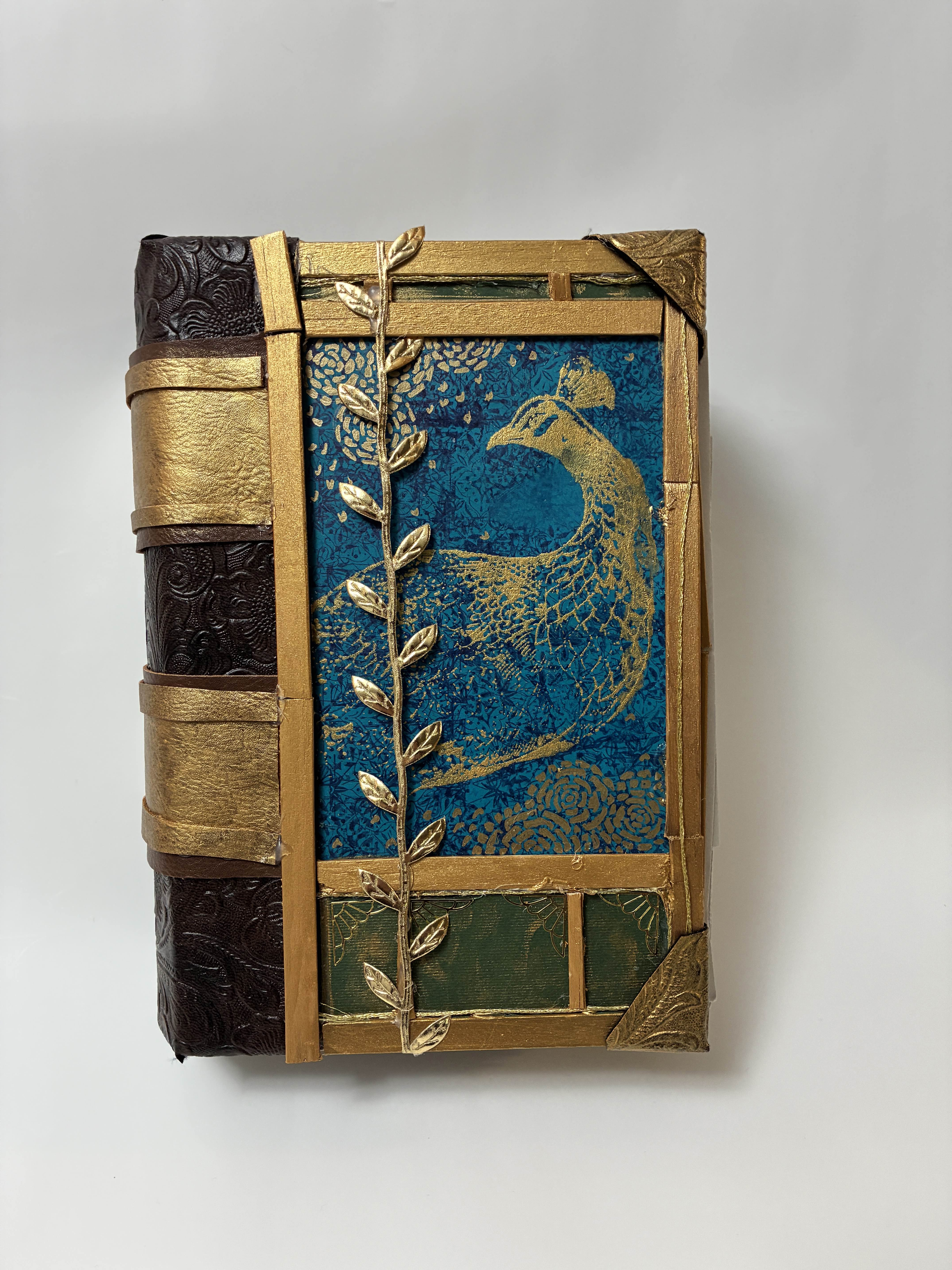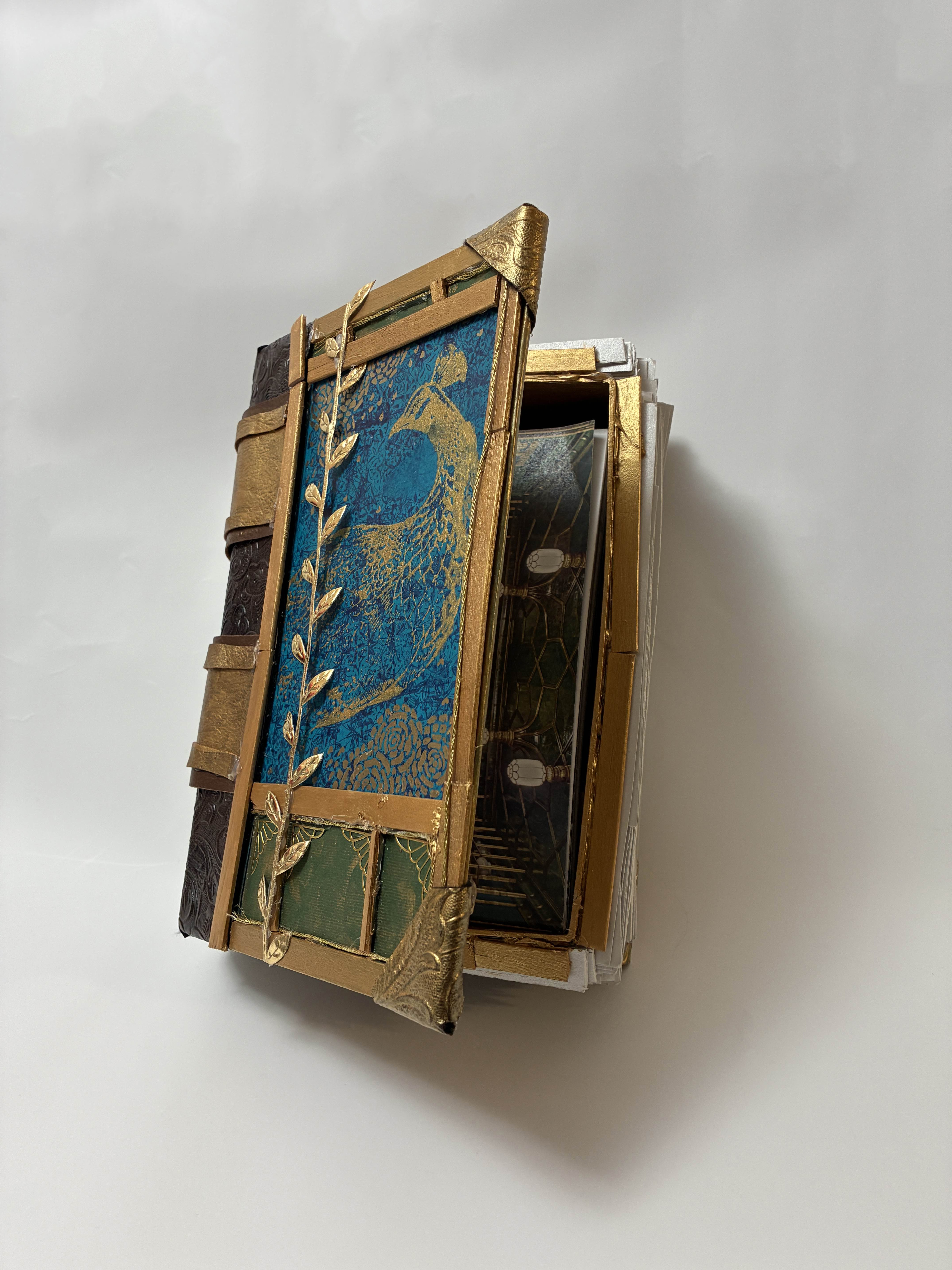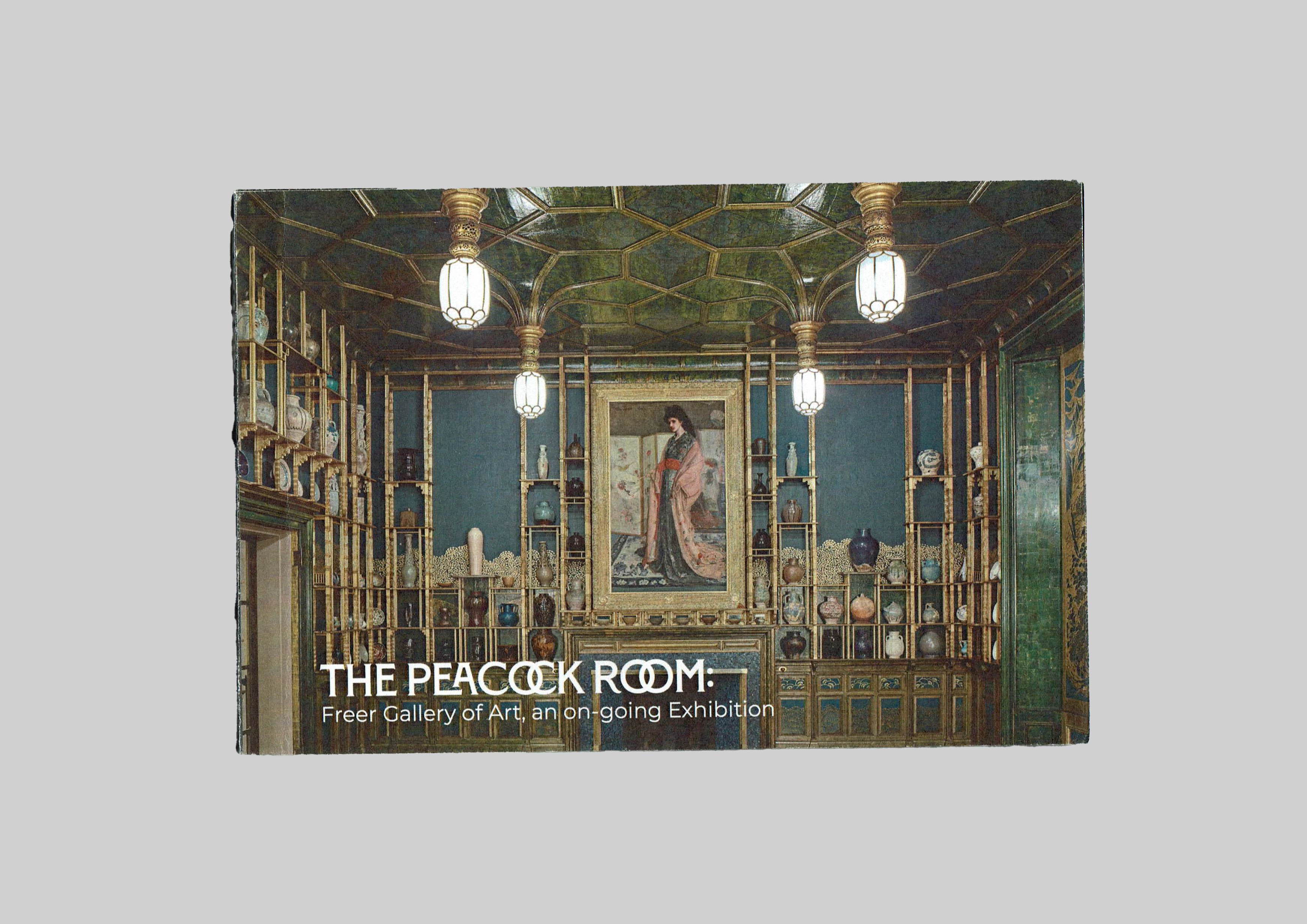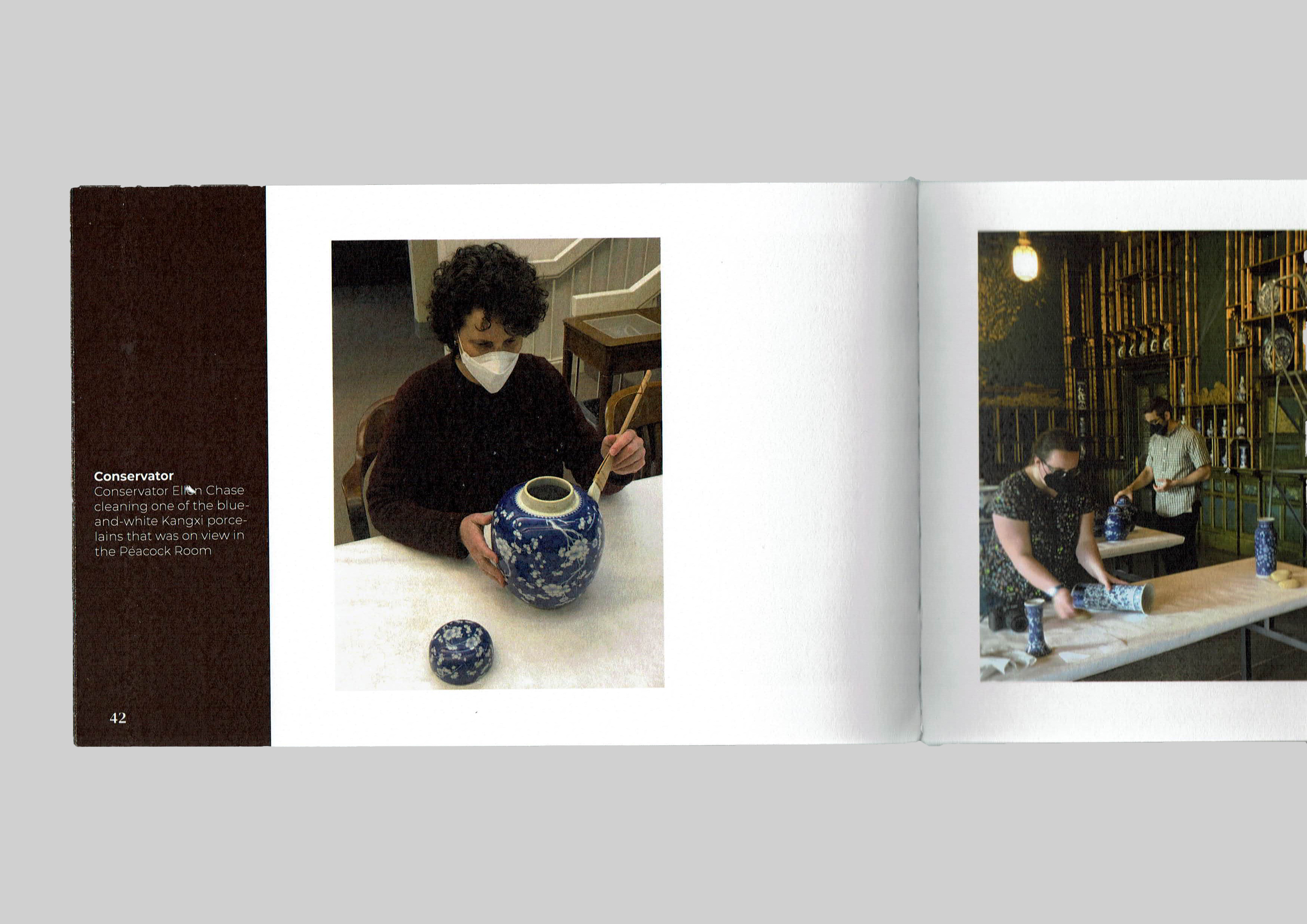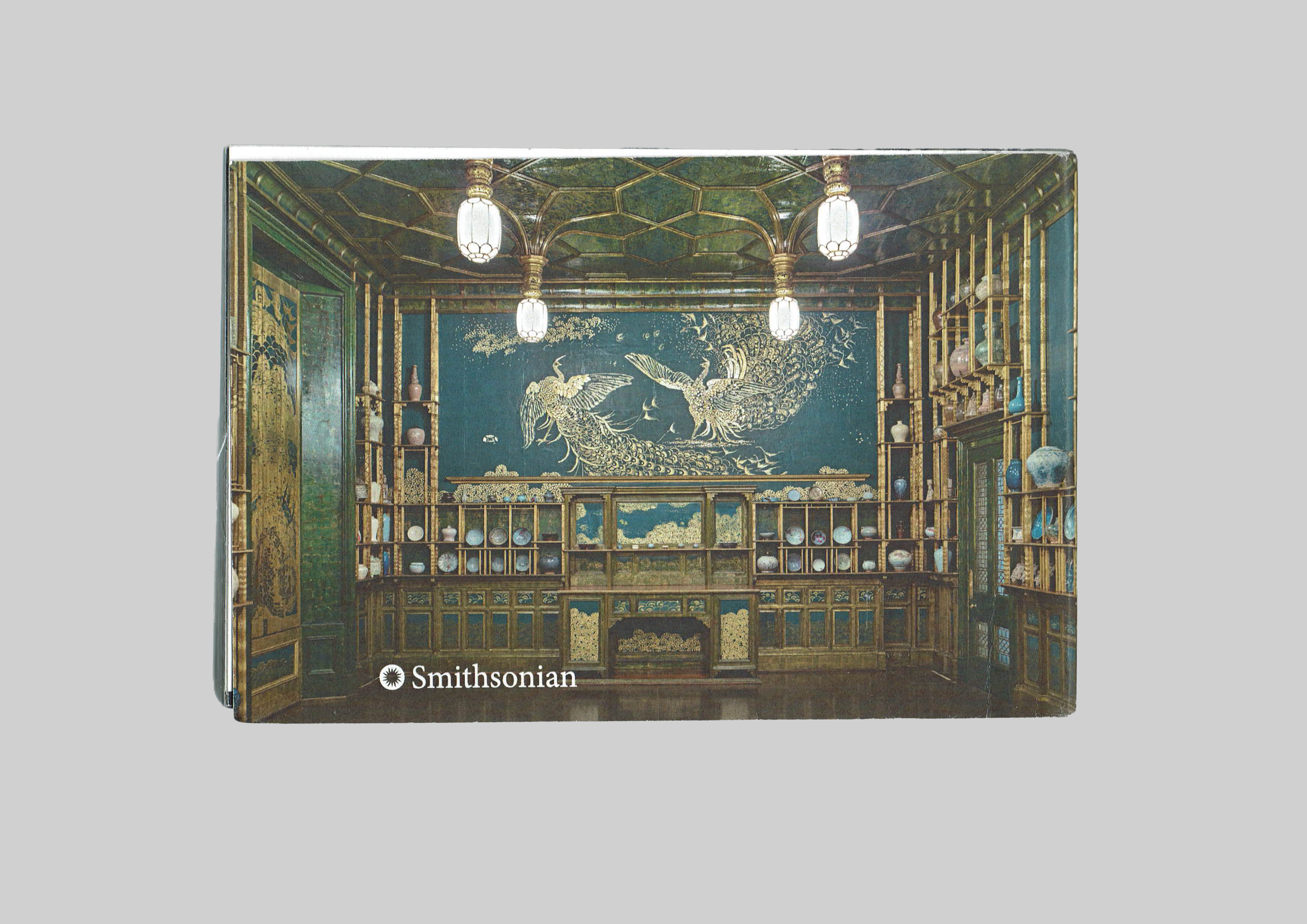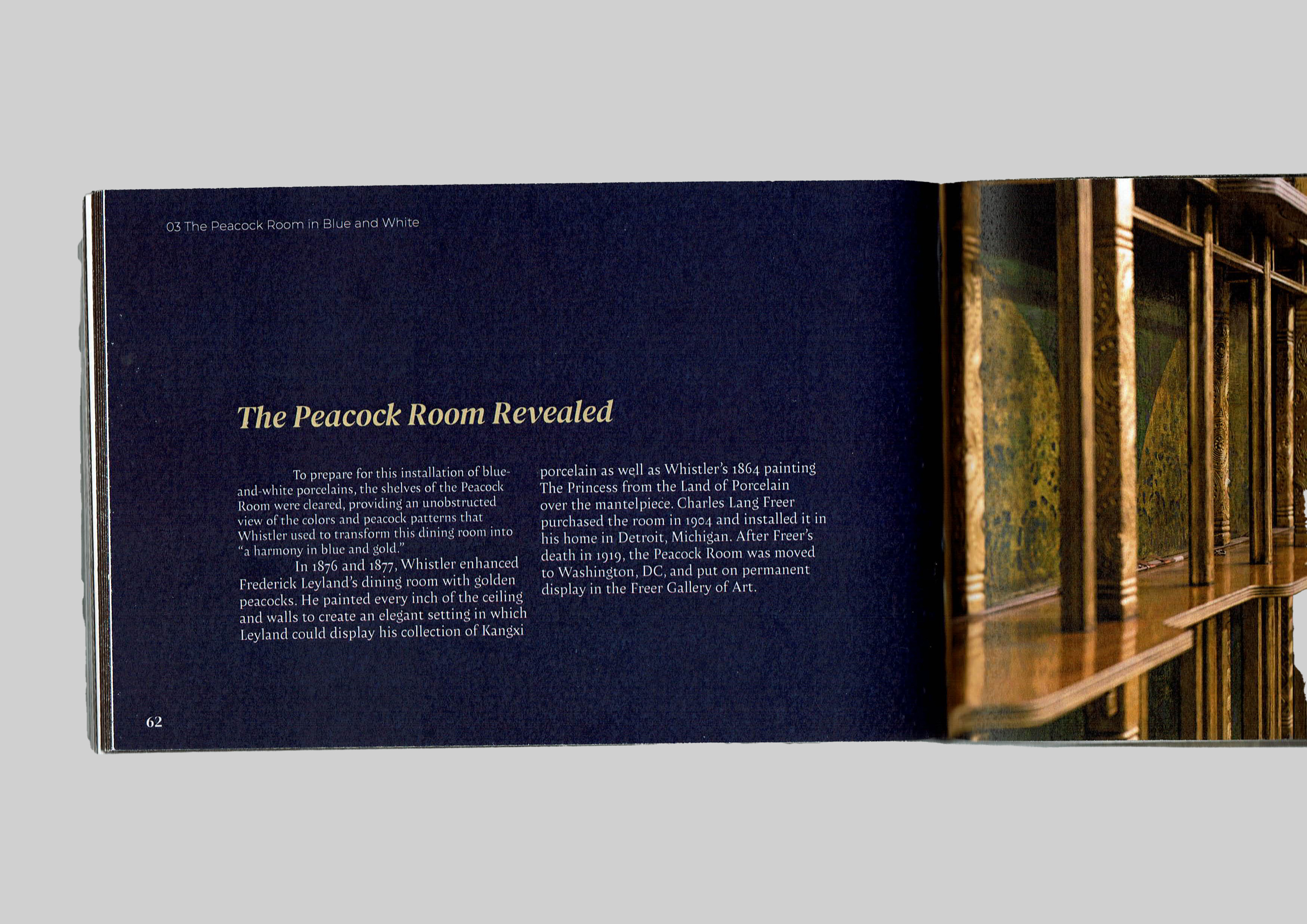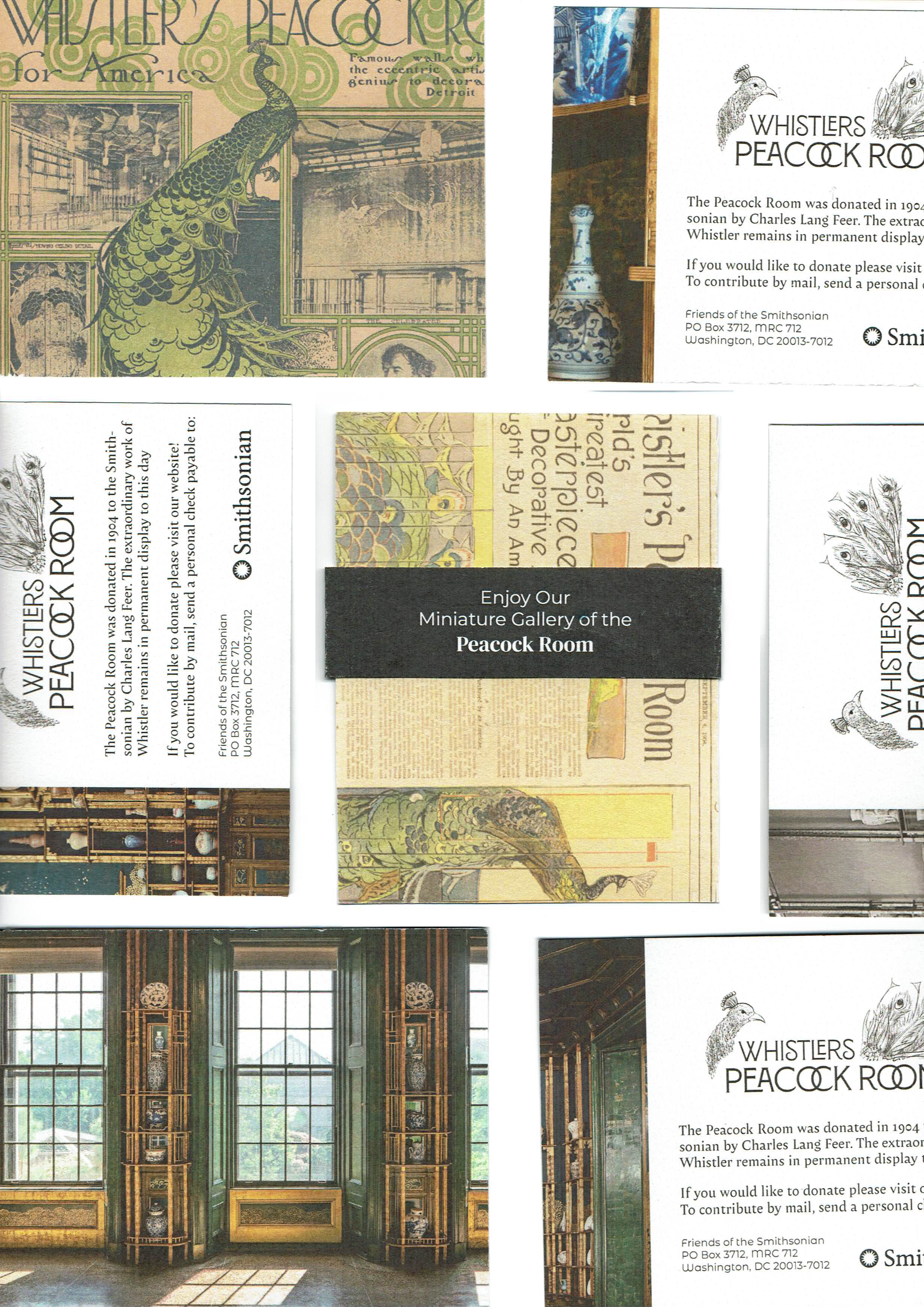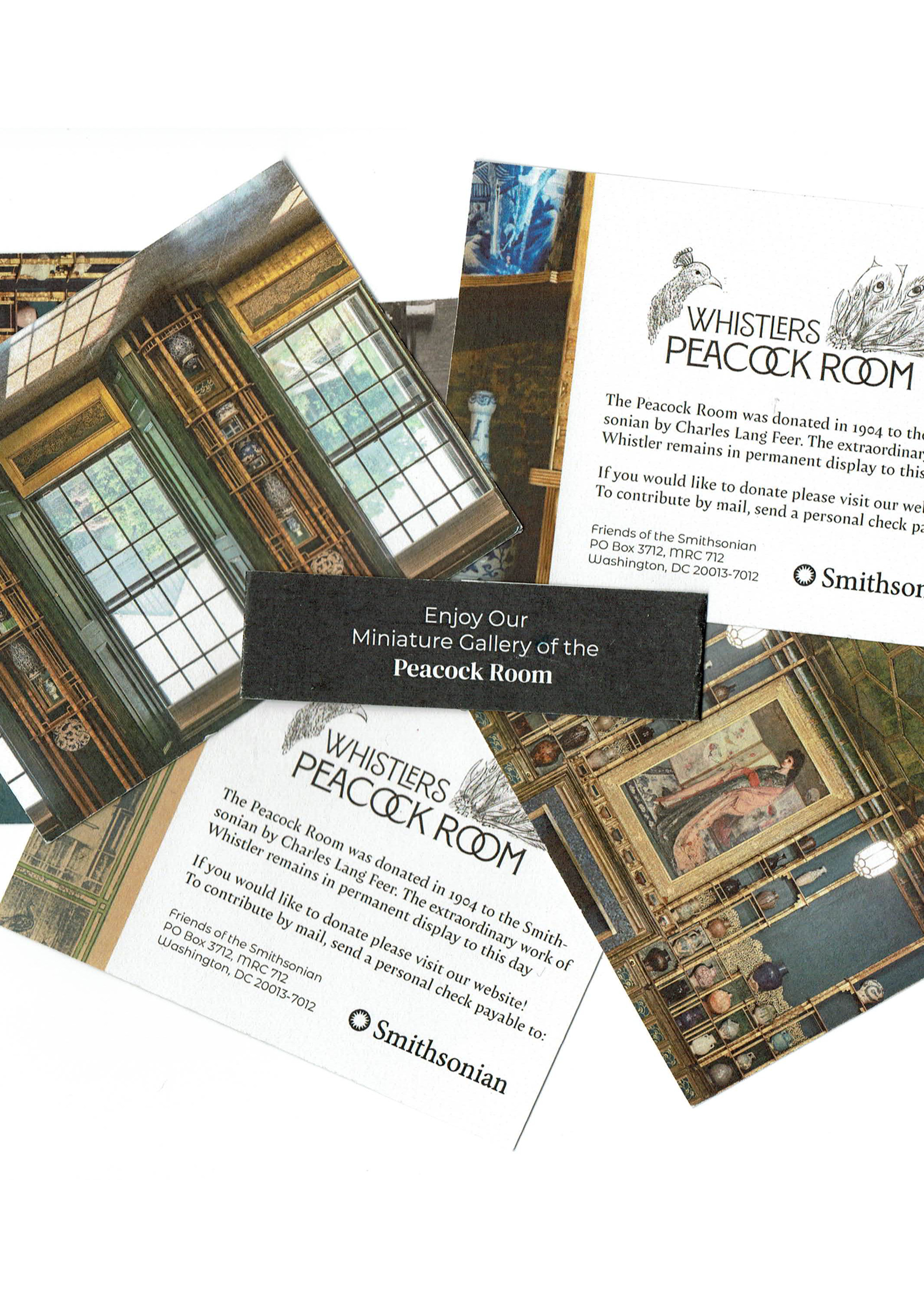
The Peacock Room
Quick Links
The Packaging
Cardboard Book Box
9 in x 6 in x 3 in
Concept
I visited the Peacock Room in Washington DC and I've wanted to make a project on it every since! I've decided on designing a gift box based off of the Peacock Room that would be sold inside the museum's gift store. Inside the box will contain a catalog of information about the exhibit, a timeline booklet comparing history to the present alongside a handful of mini-gallery donation cards!
Sketches
Once I had the box figured out I kinda went overboard on the rest. I wanted to capture the “bookish” feeling and designed the box after those ornate storage books found in art stores. Focusing on layering and texturing to achieve an authentic feel.
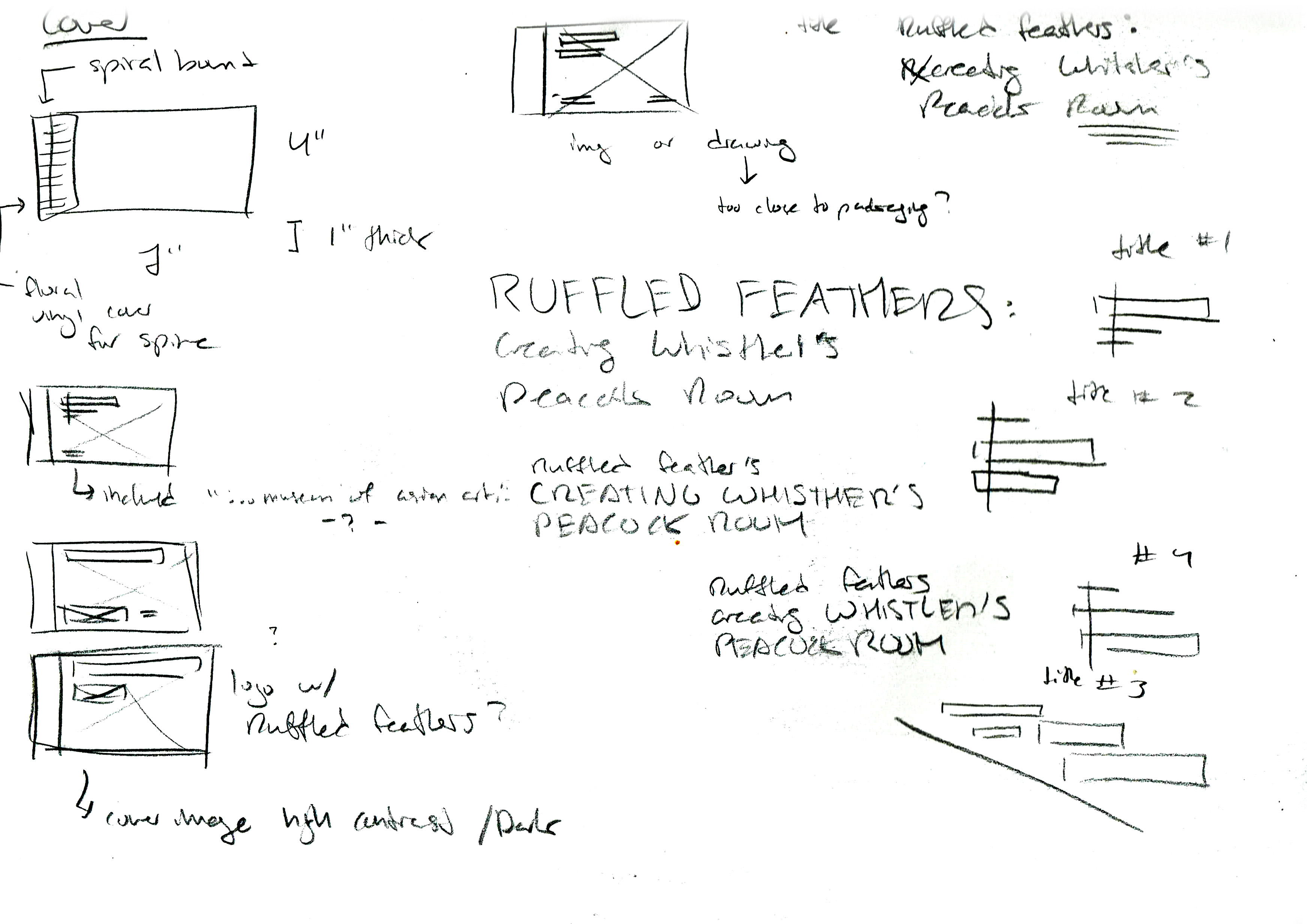
The Museum Catalog
Paper 11 in x 17 in
Style Tile
With so much happening I decided on making a “Style Tile” of my catalog. To test print color, text, and layout. Combined it all looks like one messy mood broad
Sketches
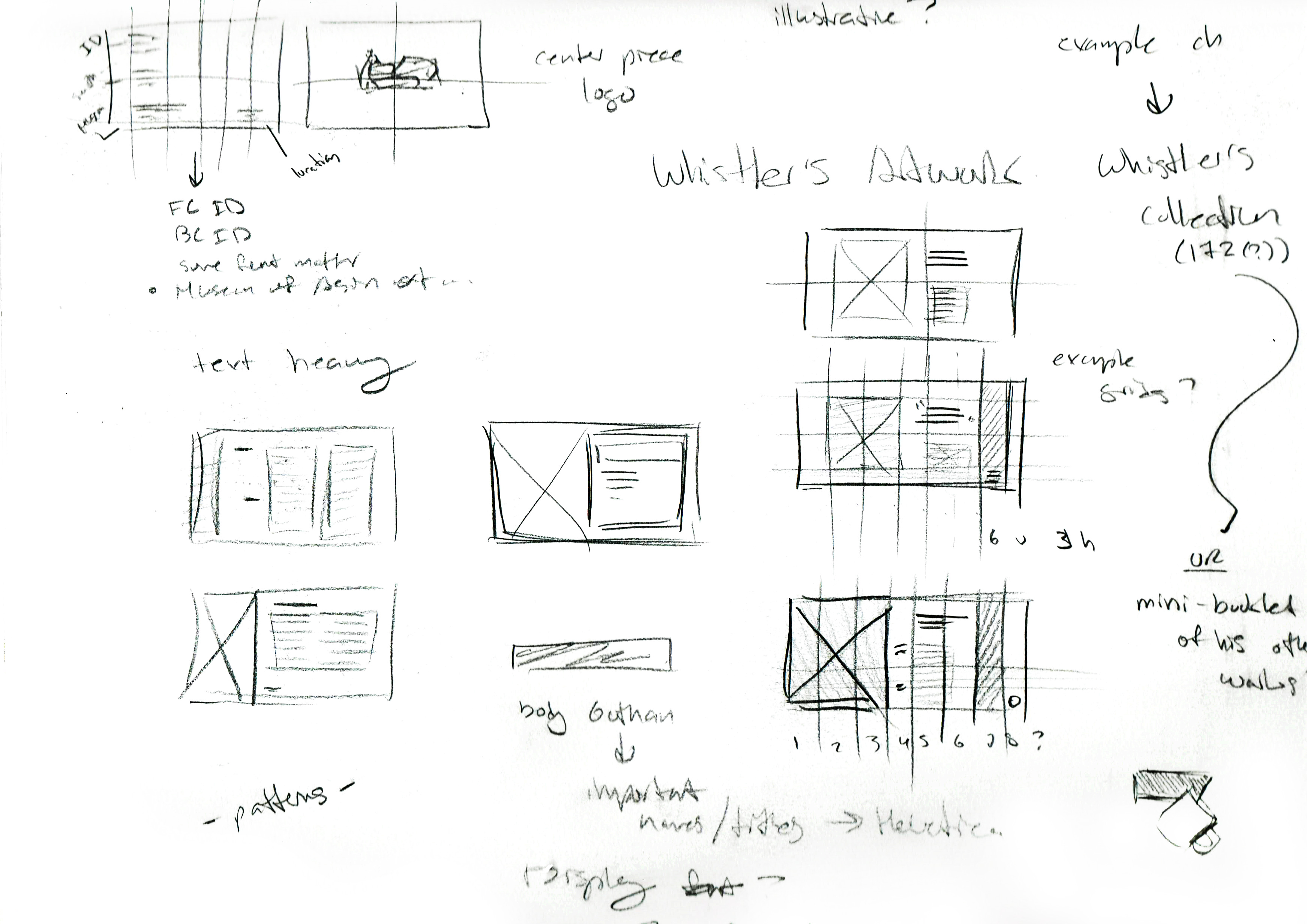
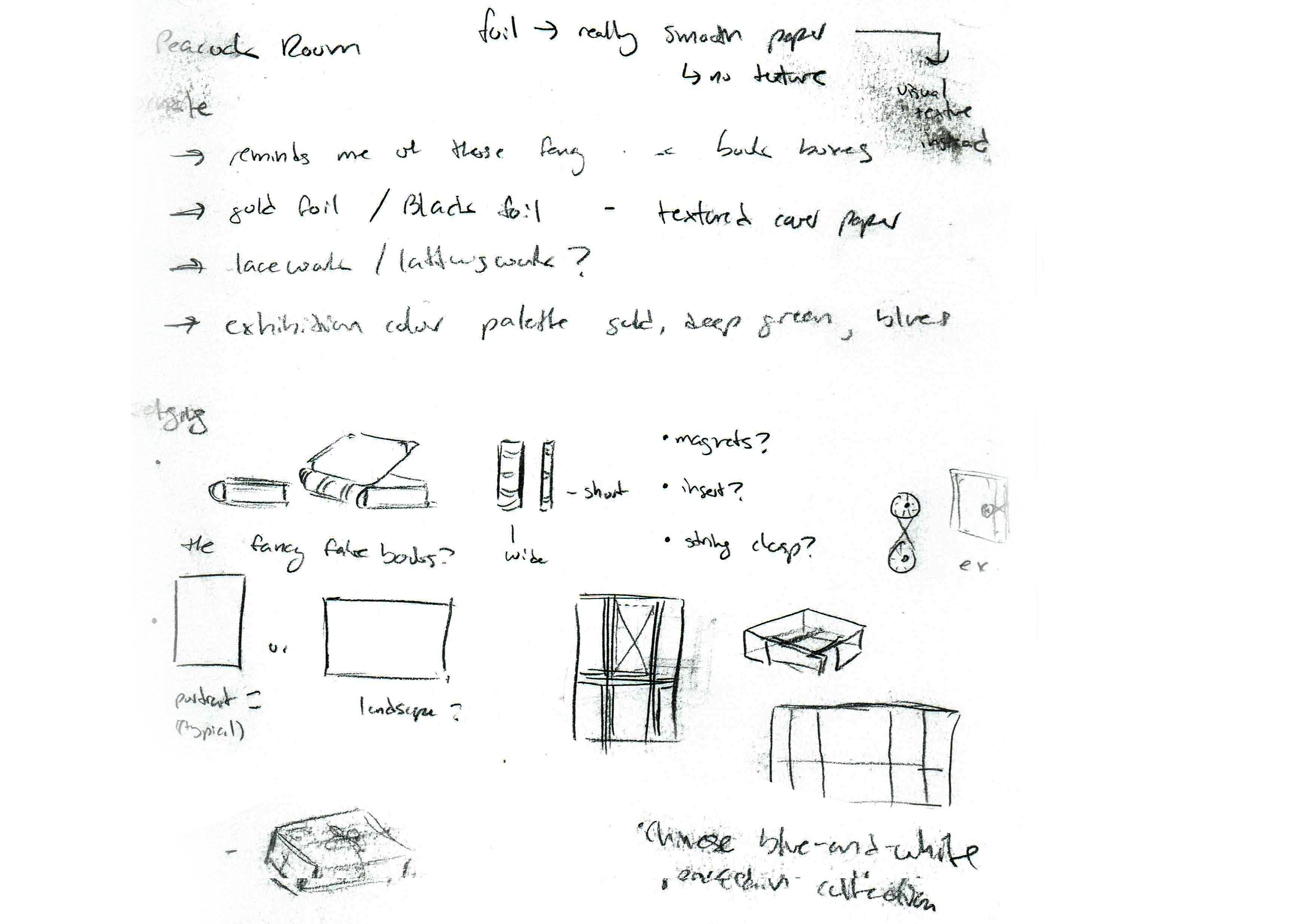

Demos
The catalog required a lot of demos! Most to spot layout errors or to test for printing errors.
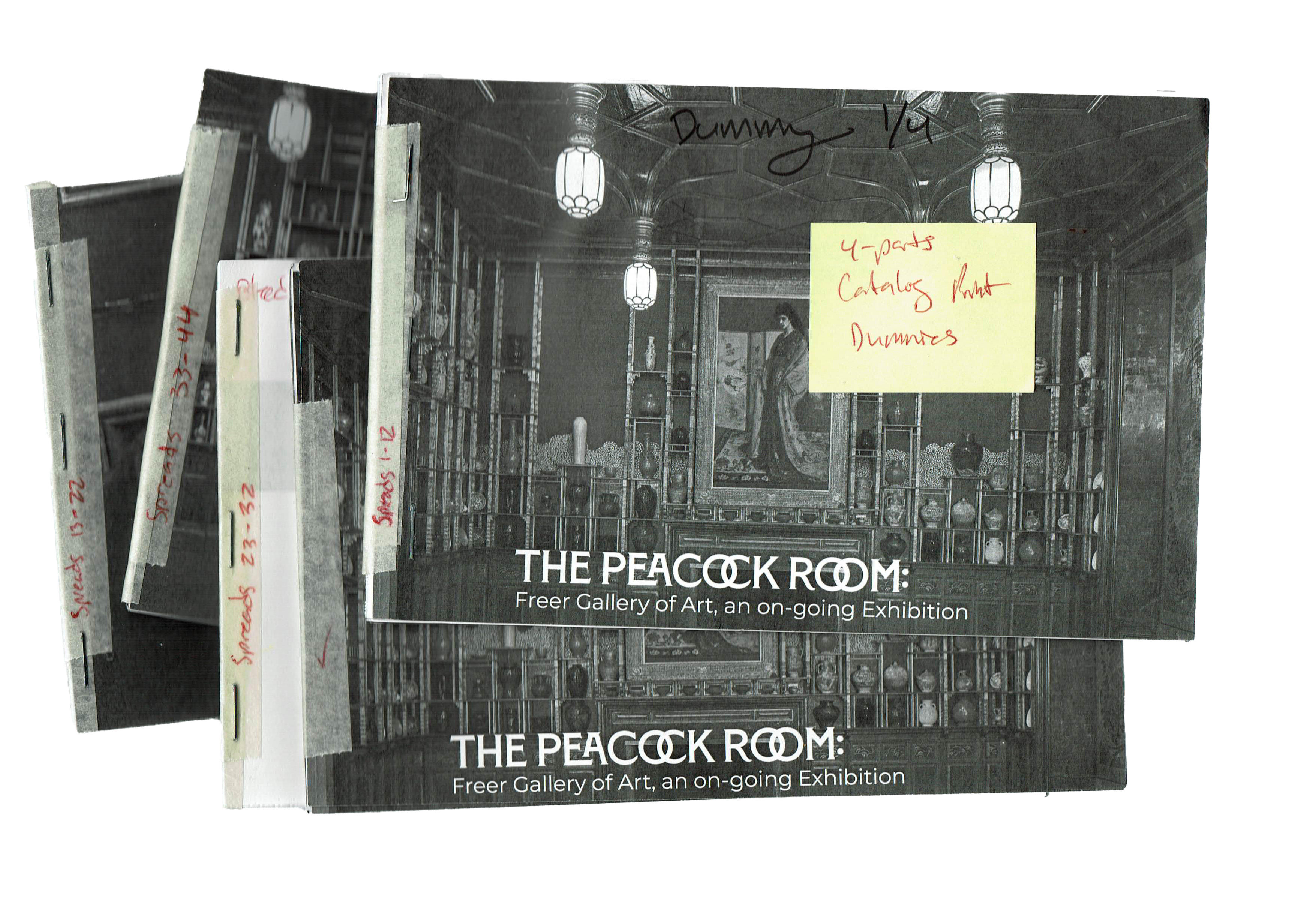
A Comparative Timeline
Cardstock Paper 11 in x 17 in
Sketches & Demos
This accordion fold booklet caused a lot of issues due to limitations in the printing interface I had at the time. Without duplex printing I had to manually alter and align these pages so they would display correctly. The booklet itself also needed to be made delicately as using double sided tape created a seamless.
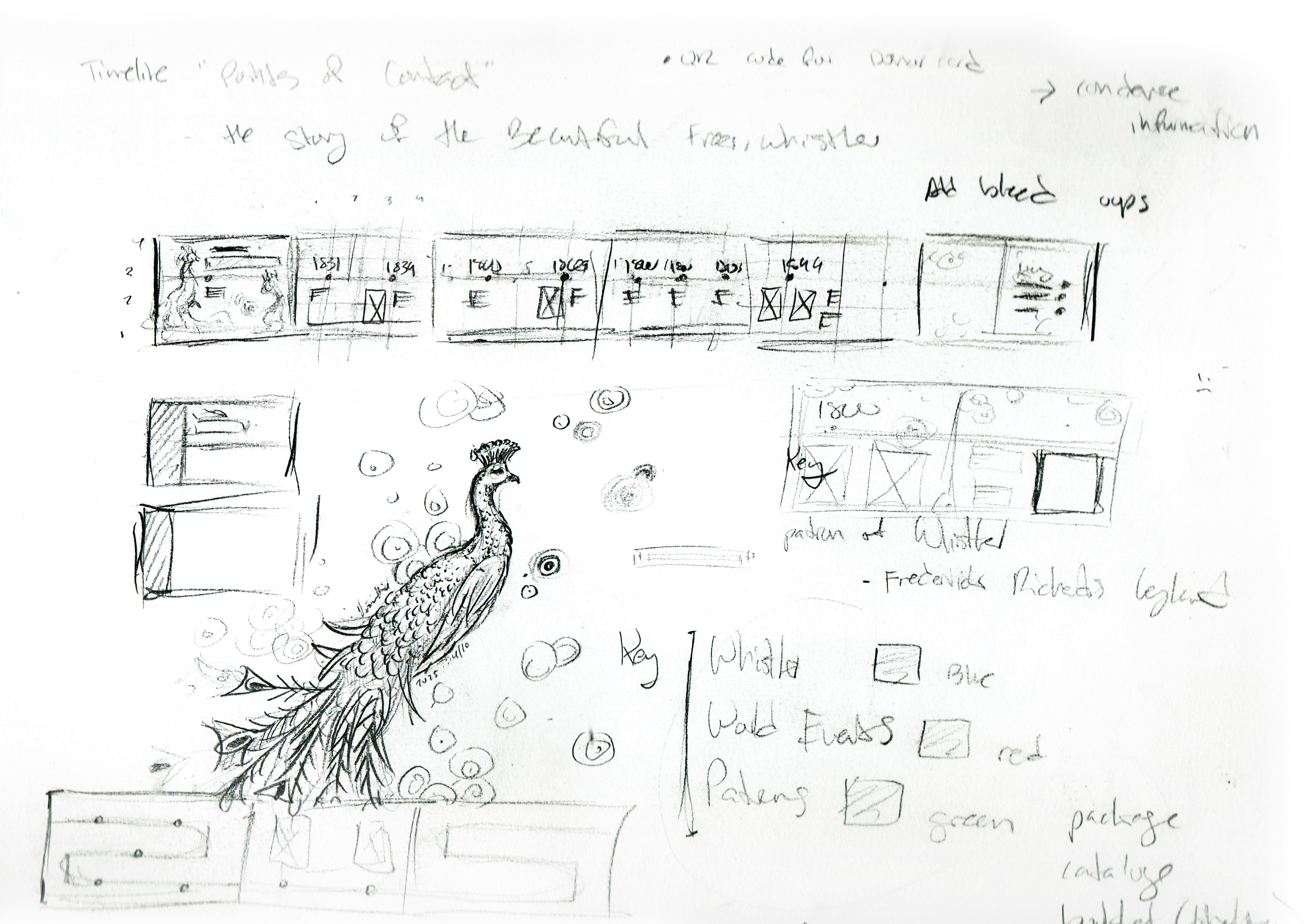
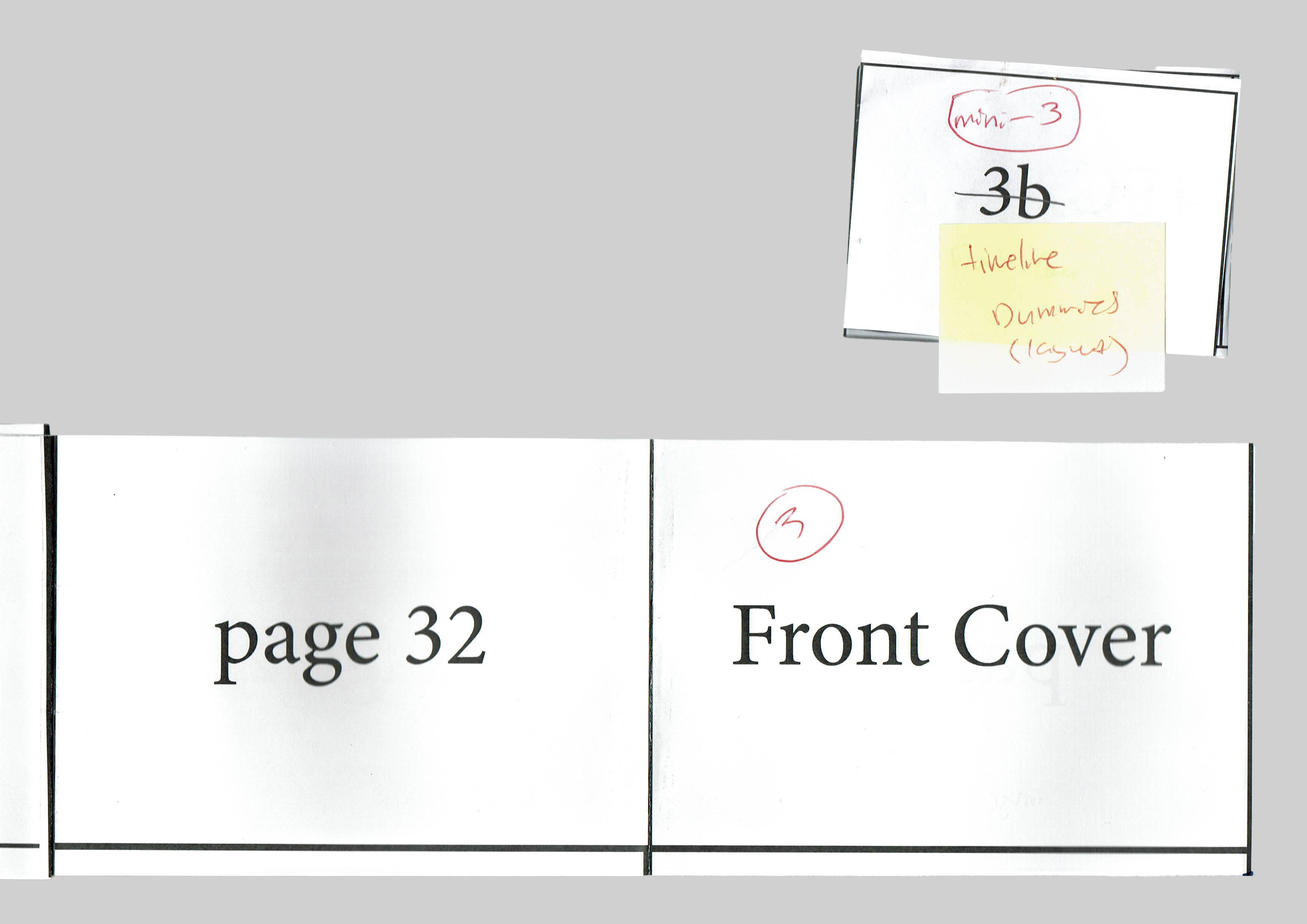
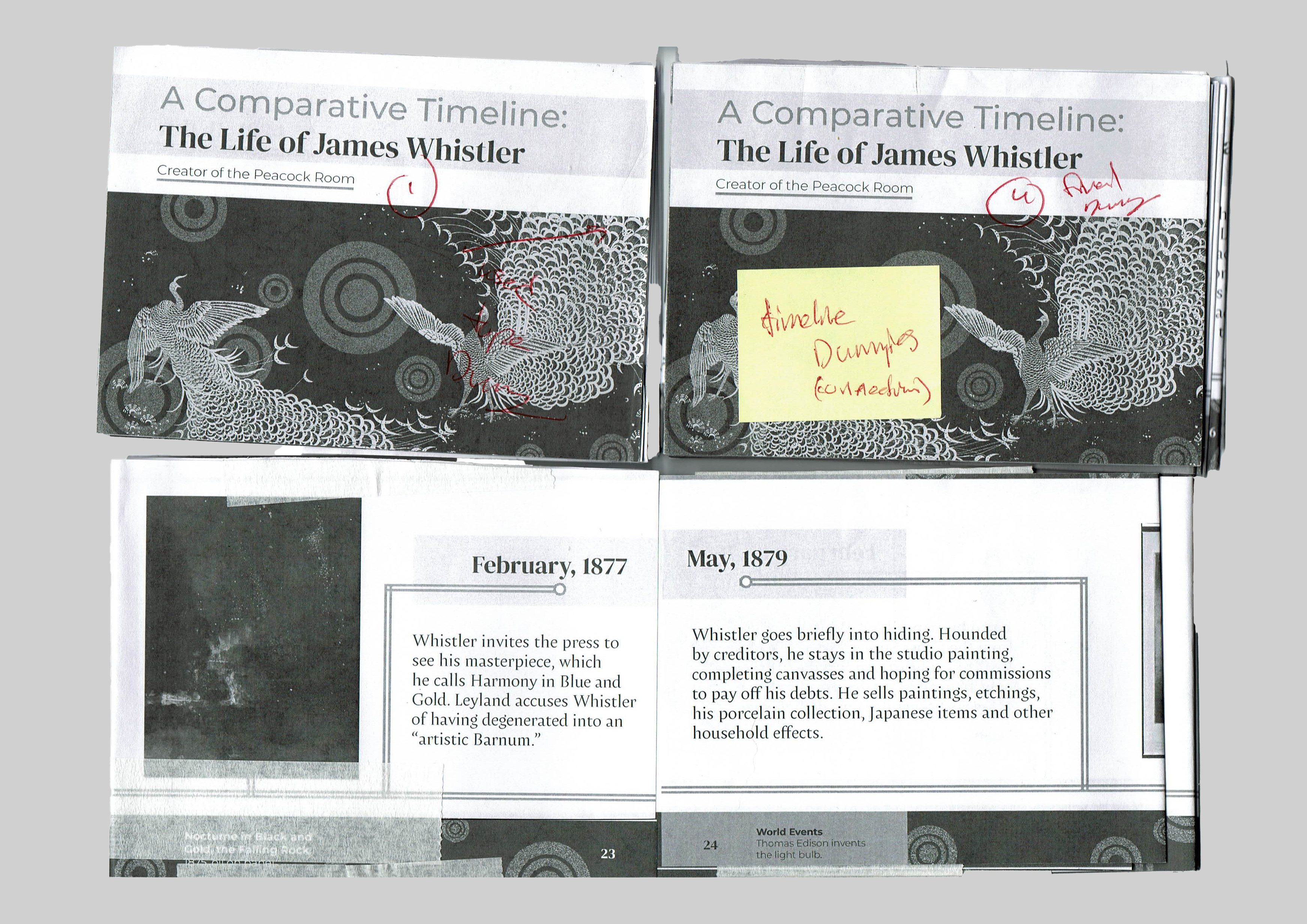
Completed Timeline
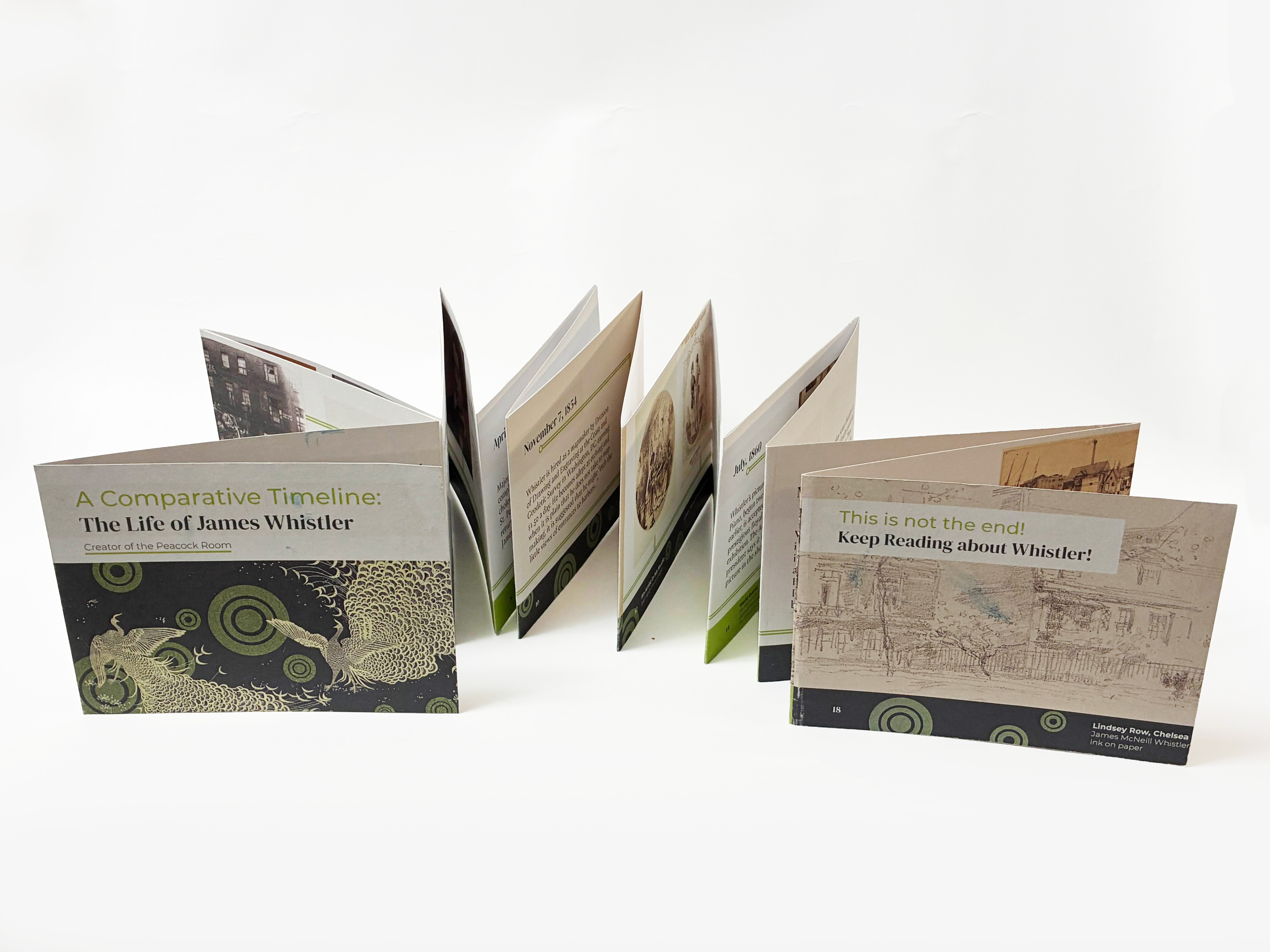

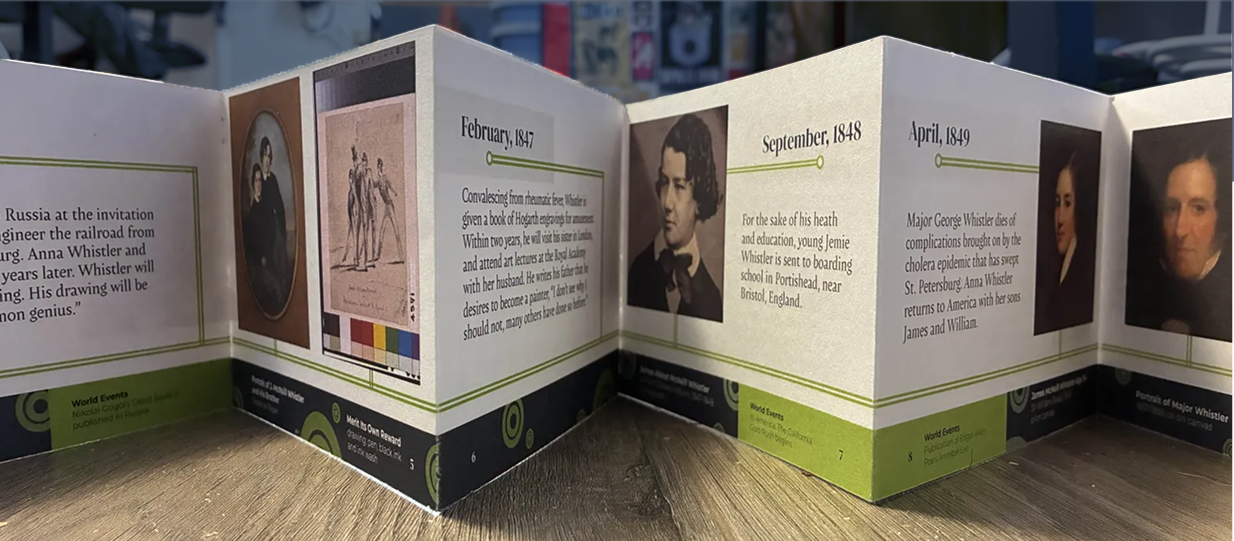
Donor Cards
Cardstock Paper
4.5 in x 5.3 in
Brief
These Donor cards were inspired by collectable cards. Using the photographs provided by the Smithsonian the backing of these cards were various imagery in relation to The Peacock Room. With the idea that the consumer can purchase a set, held together in a blank belly band, could have a miniature picture gallery in their pocket. The frontal side is adored with a logo, short summary of the room's history, and donation information for those inclined to contribute.
